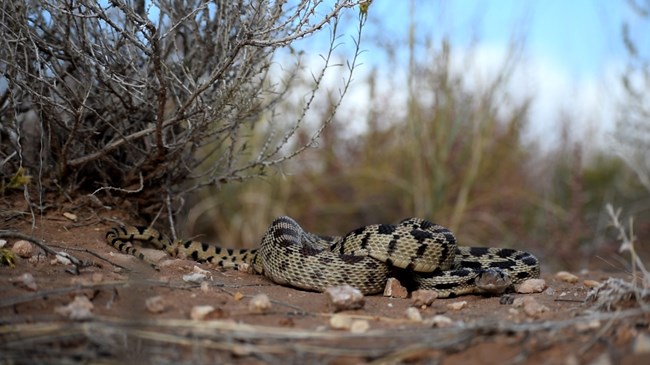
NPS/ C. Henzel Being one of the slower species of snake opens up this snake to predation from hawks, eagles, coyotes and foxes. As a defense mechanism the snake will coil itself up and vibrate its tail in an attempt to mimic a rattlesnake. It hisses using an organ called the glottis. As the glottis opens and closes rapidly it makes a sound similar to the rattle of a rattlesnakes. In addition to the hissing and coiling the snake also has the ability to flatten its head giving it a more triangular shape like that of a rattlesnake. This mimicry will sometimes fool potential predators allowing the snake to live another day. 
NPS/ C. Henzel |
Last updated: February 8, 2019
